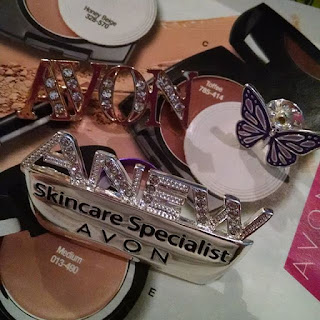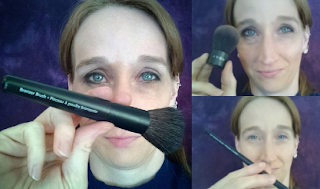Trying to sell on social media? You absolutely need a visual content strategy.
One more time:
Visual. Content. Strategy.
Text only is not going to cut it. Still images only is probably not going to cut it anymore, either, though there is still a huge demand for high quality imagery, including illustrations, infographics, and photographs. Short, high quality value packed videos are in really high demand. (And short supply).
As a brand (EVEN as an individual, direct sales personal brand) your social media strategy has got to be more than “Use more images.” The application of visuals in your social media efforts has to be strategic and carefully planned. Write your story first, and then seek the visuals that will meet those story goals.
Your content strategy HAS TO:
- Align imagery with marketing goals
- Be creative, original, authentic and high quality
- Be optimized for each social media channel in format, content and size while maintaining cohesiveness
- Include a variety of image formats (photographs, video, infographics, illustrations)
3 elements of a visual content strategy are authenticity, consistency and storytelling.
Authenticity
Visuals, such as photographs, used on social media need to be authentic, not staged. They should try to evoke emotion, be editorial in style, and reflect lifestyle. Avoid stock images like the plague. And, they need to tell a story.
Content consumers crave authenticity. Lead with passion. This is why millenials are so successful with social media, because they are leading with personal passion. And they are authentic. The types of visual content they create is authentic and personal. They take selfies, they share experiences, they shoot video of places they go and things they do. This subgroup of consumers, usually in the 18-35 age range, crave authenticity because they want their life experiences to be real and valid. They want brands and the products they use to be authentic; they shun fake and they don’t trust spin. They want honesty and will flat out reject you if they can sense any false pretenses in you, your brand or your product. Authentic engagement is truly very important to millenials on social media, and there are A LOT of millenials on social media! Interaction and engagement has to come from a real live person.
 |
| My AVON pins! |
Consistency
Visual storytelling has to communicate consistently. Visual content has to cut through the noise on social media, and to do so successfully and sustainably, you need to make sure your visual content strategy has a consistent look and feel. People need to be able to recognize you, your brand and your story.
This can be accomplished through a variety of tools, such as visual styleguides and templates. Styleguides lead you with a consistent image look, what color schemes to use, what fonts you should stick to, and how you portray your brand image. Batching can be done whenever you create content, and kills two birds with one stone: 1. Batching makes sure your visuals are all customized for the social media channel they are being shared through, and 2. Batching makes sure that you are following your visual styleguide and keeping the look and feel recognizable and consistent. Developing a visual content library where reusable content and visual elements are stored can make it much easier for you. Photos, videos, infographics, fonts, textures, logos, and anything else you use regularly in your visual imagery can be stored and easily pulled for use at any time.
 |
| Infographic using styleguide |
Storytelling
Perhaps it should be storyshowing, not storytelling. Narrative writers know that you “show, don’t tell” a story. Painting a proverbial picture is a lot easier with images then with words, but you still need to craft your story carefully.
Single images can tell a story, but a series of images can craft a sustained story that makes people want to return to you for more. Think about cliffhangers… Video is incredibly effective at telling stories, but again that storytelling needs to be thoughtfully crafted.
 |
| Series of photographs applying makeup with different brushes. |
7 Secrets of Visual Narratives:
Storylines
Storytelling clearly requires a beginning, middle and end. Advance to the plot outline of exposition, rising action, climax, falling action and denouement, and you’ve added a rich layer to your visual storytelling. Deliver the story in chunks, spread out over a determined period of time, linked with a common element. Keeping the story real, authentic and personal supercharges the content and really makes it connectable to your customers.
5Ws and 1 H
Who are you? What do you do? Where are your products made? How do you use your products? These are questions that you ask yourself, and then answer using visuals and image-rich media. Especially productive images result from questions that your target market asks. Solicit questions from your customers (that will get them engaged, too!) and then answer those questions creatively using visuals. This next level Q&A will create interest when delivered through visual storytelling methods.
Verbs and Action
Brainstorm a list of actions – verbs – that you want to see your customers doing with your products. I sell makeup, so I would make a list that includes putting on lipstick, painting nails, using lotion. Then work on your visuals to translate those verbs. Take photographs of someone applying nail polish, with your product front and center. Make the customer the main character in the story. Make your visuals something that customers can visualize themselves actively doing. Model those actions using your visuals; give customers that visual goal and allow them the opportunity to see themselves using your products.
Dialogue that Engages
Use visuals that create interaction, solicit comments, encourage action, play games, or ask people to do something. Anything that creates interaction can be engaging. For added depth, personalize that engagement. For example, to encourage customers to interact, create a visual of a fashion look from the 1980s. Then add a layer of text that asks, “Tell us what you wore in the 80s!” Even better, crowdsource your images by soliciting people to create and share their own images to a prompt. Engaging images get people interacting, and that subsequently leads to conversion. Building and maintaining communities will help sustain that engagement.
Sensory Imagery
Sensory imagery is the use of visuals that invoke the senses of taste, smell, sight, sound and touch. For every visual goal you are working to meet, create a list of descriptive words – adjectives – that can be creatively translated into imagery. The sensory images should help reach the customer in more ways than one: looking at a visual, yes. But also smelling or tasting the food in the photograph, or feeling the smoothness of the body lotion. Perhaps hearing a sound in a video pulls up a memory. The senses can be tapped into to generate powerful emotions, and emotional responses can lead to conversion.
Figurative Meaning
When telling a story, the use of figurative language draws you in, and makes the story richer and more intriguing. Using figurative language within visual storytelling can enhance the story and make for a more memorable message. Examples of figurative meaning within visual storytelling include: hyperbole (exaggeration, sometimes intended to create comedic value), personification (giving an object the characteristics of a person), metonymy (focusing on one small part in order to convey a whole), anaphora (repetition of something for emphasis, often creating interest by changing one small thing in each iteration)
Themes
Thematically linked visuals can be extraordinarily effective. Connect a series of storytelling images with a similar color scheme, with a consistent object or person being portrayed, or showcase the lifecycle of a particular product. Themes in storytelling are tied to human challenges. Thematic imagery can represent adventure, overcoming obstacles, celebrating, travel, life events, exploring something new, finding security or safety, or making connections with others.
Above all else, remember that storytelling is an art. There is no methodology or calculating formula you can follow. The creation of imagery requires skill, but it also needs a dash of creativity. Art comes from within, from our heart and souls, and visual storytelling masterpieces within the social media frame are no different.
What are your next steps? Write a story. Write your personal story, your brand story, your product story. Start brainstorming ideas on how to visually tell your story. Then create a list of photographs to take, infographics to make, and videos to shoot. Create those visuals, schedule them into your social media editorial calendar, and visually share your stories!



























